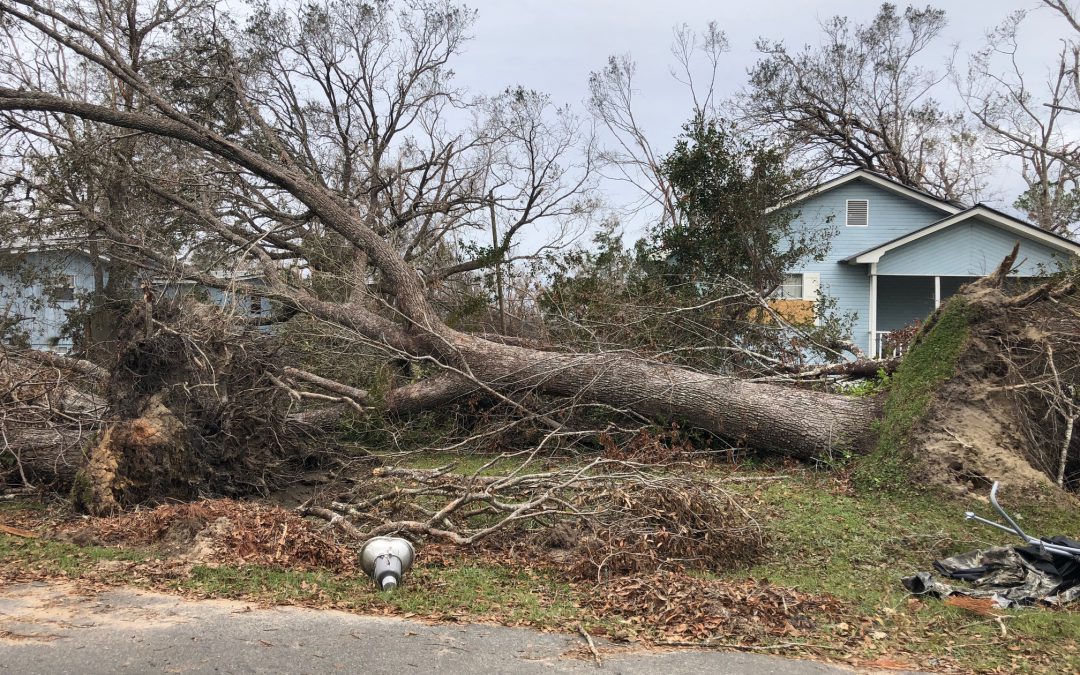
by Carrie Stevenson | May 17, 2019
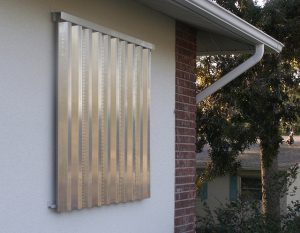
Aluminum shutters are one of the many preventative measures panhandle homeowners can include in their hurricane preparedness.
Photo: Carrie Stevenson
Hurricane Season in the Gulf and Atlantic begins June 1. For those of us who have lived in hurricane territory for some time, we all have our war stories of days without electricity and water, of being stuck in evacuation traffic, and of neighborhood camaraderie in the aftermath. Whether a newcomer or a native, it is always important to plan ahead and not be complacent about storm readiness. The last few summers have borne out the climate predictions of stronger storms, with many of our neighbors still struggling to dig out of the immense damage done by Category 5 Hurricane Michael last fall.
In this article, I will be paraphrasing a section from the well-done Homeowners Handbook to Prepare for Natural Hazards. A new version of this guide will be coming out soon, but I highly recommend the handbook (hard copies available at many Extension offices) for anyone living in Florida.
Tip #1: Gather your emergency supplies. Do this sooner than later—when a storm is in the Gulf with a trajectory towards your city is not the time to go shopping. Lines will be long, people will be stressed, and shelves will start to empty. Gather emergency supplies like water, canned goods, batteries, and flashlights (full list here) now, and restock monthly throughout the summer and fall.
Tip #2: Create a separate evacuation plan for natural events, such as hurricanes/tropical storms, tornadoes, floods, and wildfires. Northwest Florida is prone to all of these natural phenomena, and the plan required for each is different. For a tornado or tropical storm you will most likely shelter in place (unless your home is not secure in this situation), while fires, flooding, and strong hurricanes may require securing your home and leaving town.
Tip #3: Know you property and take appropriate action. Look at your location—if the land floods during a rain, consider flood insurance. If trees overhang your house, consider trimming or cutting branches that might damage your house in a storm. If the property has a high structural profile, it could be especially susceptible to wind damage in a hurricane.
Tip #4: Know your house and take appropriate action. When was your house built? Does it have connectors to tie the roof to the wall or the wall to the foundation? When will you need to reroof? Look at your blueprints—if you don’t have a copy, your homebuilder or local building department may have copies.
Tip #5: Strengthen your house. A house built after the early to mid-1990’s should have hurricane clips tying the roof to the wall and strong connectors from the wall to the foundation. If your house was built before then, you can still retrofit at a reasonable cost. Wind-rated garage doors, precut shutters, and replacing windows with impact-resistant glass can all protect your home. In the western Panhandle, 75% of retrofit costs can be covered through the Rebuild Northwest Florida wind mitigation program.
Tip #6: Utilize the State of Florida’s Hazard Mitigation Grant Program. This program can be used for a number of home improvements, including construction of a safe room for tornado shelter.
Tip #7: Insurance. Don’t gamble with your house. Obtain adequate wind, flood, and home insurance. Remember—if there is a hurricane in the Gulf, insurance companies will not issue windstorm policies.
Tip #8: Take advantage of potential discounts for your hurricane insurance premiums. Coverage may vary among insurance companies, so call you insurance agent to find out about discounts that may be available. Significant discounts may be provided for reducing the risk to your house with window protection, roof-to-wall tie downs, and wall-to-foundation tie downs.
Tip #9: Finance creatively. Consider efforts to strengthen your house as an important home improvement project. Most projects are not that expensive. For the most costly ones, a small home improvement loan and potential discounts from hurricane insurance premiums may make these projects within reach. It is a great investment to strengthen your house and provide more protection to your family.
Tip #10: Seek the assistance of a qualified, license architect, structural engineer, or contractor. There are some improvements that can be done yourself, but if you cannot do the work, seek qualified assistance through trusted references from friends and family and professional associations.
For more information, reach out to your county Emergency Management department or visit these IFAS Extension Hurricane Preparedness and Recovery resources.
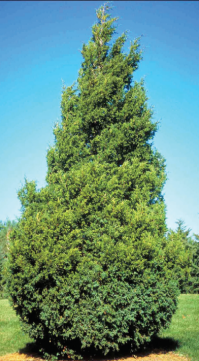
by Sheila Dunning | Dec 19, 2018
 Throughout history the evergreen tree has been a symbol of life. “Not only green when summer’s here, but also when it’s cold and dreary” as the Christmas carol “O Tannenbaum” says. After such devastating tree losses in the Panhandle this year, this winter is a prime time for installing more native evergreens.
Throughout history the evergreen tree has been a symbol of life. “Not only green when summer’s here, but also when it’s cold and dreary” as the Christmas carol “O Tannenbaum” says. After such devastating tree losses in the Panhandle this year, this winter is a prime time for installing more native evergreens.
While supporting the cut Christmas tree industry does create jobs and puts money into local economics, every few years considering adding to the urban forest by purchasing a living tree. Native evergreen trees such as Redcedar make a nice Christmas tree that can be planted following the holidays. The dense growth and attractive foliage make Redcedar a favorite for windbreaks, screens and wildlife cover. The heavy berry production provides a favorite food source for migrating Cedar Waxwing birds. Its high salt-tolerance makes it ideal for coastal locations. Their natural pyramidal-shape creates the traditional Christmas tree form, but can be easily pruned as a street tree.
Two species, Juniperus virginiana and Juniperus silicicola are native to Northwest Florida. Many botanists do not separate the two, but as they mature, Juniperus silicicola takes on a softer, more informal look. For those interested in creating a different look, maybe a Holly (Ilex,sp.) or Magnolia with full-to-the-ground branches could be your Christmas tree.
When planning for using a live Christmas tree there are a few things to consider. The tree needs sunlight, so restrict its inside time to less than a week. Make sure there is a catch basin for water under the tree, but never allow water to remain in the tray and don’t add fertilizer. Locate your tree in the coolest part of the room and away from heating ducts and fireplaces. After Christmas, install the new tree in an open, sunny part of the yard. After a few years you will be able to admire the living fence with all the wonderful memories of many years of holiday celebrations. Don’t forget to watch for the Cedar Waxwings in the Redcedar.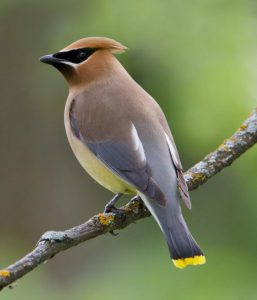

by Scott Jackson | Nov 26, 2018
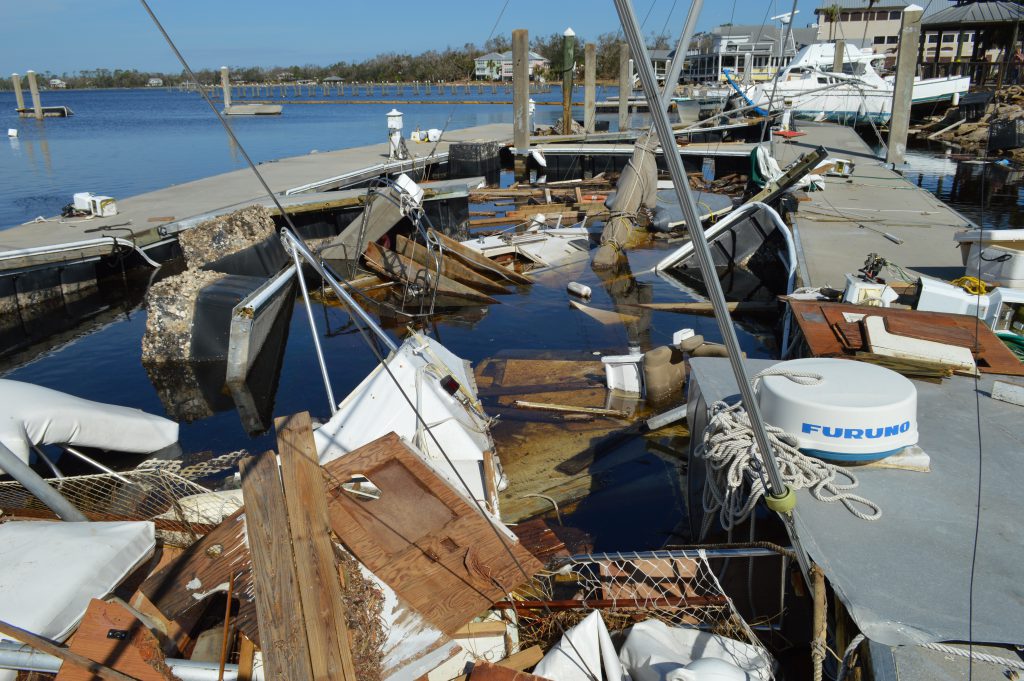
There was a special Fishery Disaster declaration post-Hurricane Michael. Here is an example of the damage to marinas and vessels that service our local fisheries. Unseen is the economic damage to fishing crews and supporting shore base businesses such as seafood processors, bait and tackle shops, and tourism related businesses. (Photo by Allen Golden).
Florida Governor Scott requested Fishery Disaster Assistance because of Hurricane Michael October 23, and the US Secretary of Commerce official responded with a determination letter providing additional disaster assistance to impacted fishing businesses and individuals October 31, 2018. https://www.commerce.gov/news/press-releases/2018/11/us-secretary-commerce-wilbur-ross-declares-fishery-disaster-florida
This link provides an outline for the established process to obtain Fishery Disaster Assistance: https://www.fisheries.noaa.gov/insight/frequent-questions-fishery-disaster-assistance
Additional Hurricane Michael relief funds and resources for local fisheries are welcome and encouraging. However, there are several steps before these specific program funds will be available. After the Secretary of Commerce sends the Florida Governor a determination letter, there are additional steps before those funds will reach the industry. The timing of these specific fisheries disaster resources varies; Hurricane Irma (2017) funds have not made it through the entire process at this time. A funding plan for Irma was recently developed by the state of Florida in September 2018. http://myfwc.com/conservation/special-initiatives/irma
Other disaster recovery programs, including those for Hurricane Michael, can be accessed now by fishing and coastal businesses. There is a helpful document written to help guide fishermen to other recovery resources with examples of how fishing businesses accessed some of these program funds. See more at https://www.fisheries.noaa.gov/webdam/download/66759294
One important immediate aid program to consider is the Florida Small Business Development Center ‘bridge” loan program. Solo proprietors can borrow $25,000 while businesses with paid employees can qualify for up to $50,000 for one year interest free. This program is meant to provide immediate dollars to assist business owners while they await other payments from insurance or federal assistance such as the Small Business Administration loan. Important Deadline: Applications will be accepted through December 7, 2018. Learn more about the Florida SBDC Bridge Loan program at http://www.floridadisasterloan.org
Federal Small Business Administration Disaster Loan Program is a long term loan to aid in business or personal recovery. https://disasterloan.sba.gov/ela/Documents/Three_Step_Process_SBA_Disaster_Loans.pdf
Business Recovery Centers (BRC) provide one on one counseling and assistance from both the Florida SBDC and US SBA to help individuals navigate the recovery process. The current location of the Hurricane Michael Business Recovery Centers is available at: http://floridasbdc.org/services/business-continuation/disaster/
The Florida SBDC also has permanent offices throughout Florida. Visit http://floridasbdc.org/locations/ to find a location near you.
If you need additional information assistance for your marina, commercial fishing, or for-hire charter business related to Hurricane Michael, please contact your local UF/IFAS Extension Office and Florida Sea Grant Extension Agent.
Bay County – Scott Jackson – LSJ@UFL.EDU
Gulf County – Ray Bodrey – RBODREY@UFL.EDU
Franklin and Wakulla Counties – Erik Lovestrand – ELOVESTRAND@UFL.EDU
Okaloosa and Walton Counties – Laura Tiu – LGTIU@UFL.EDU
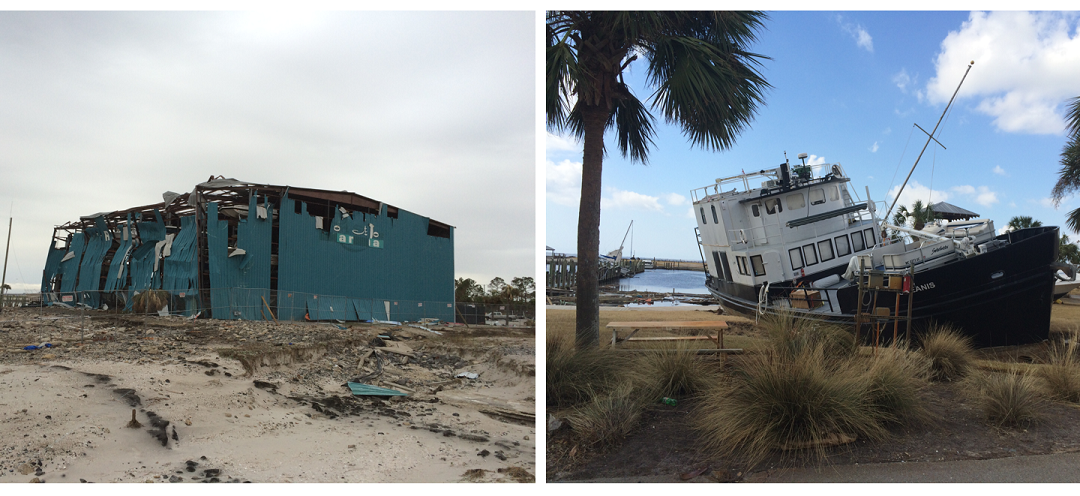
by Erik Lovestrand | Nov 26, 2018
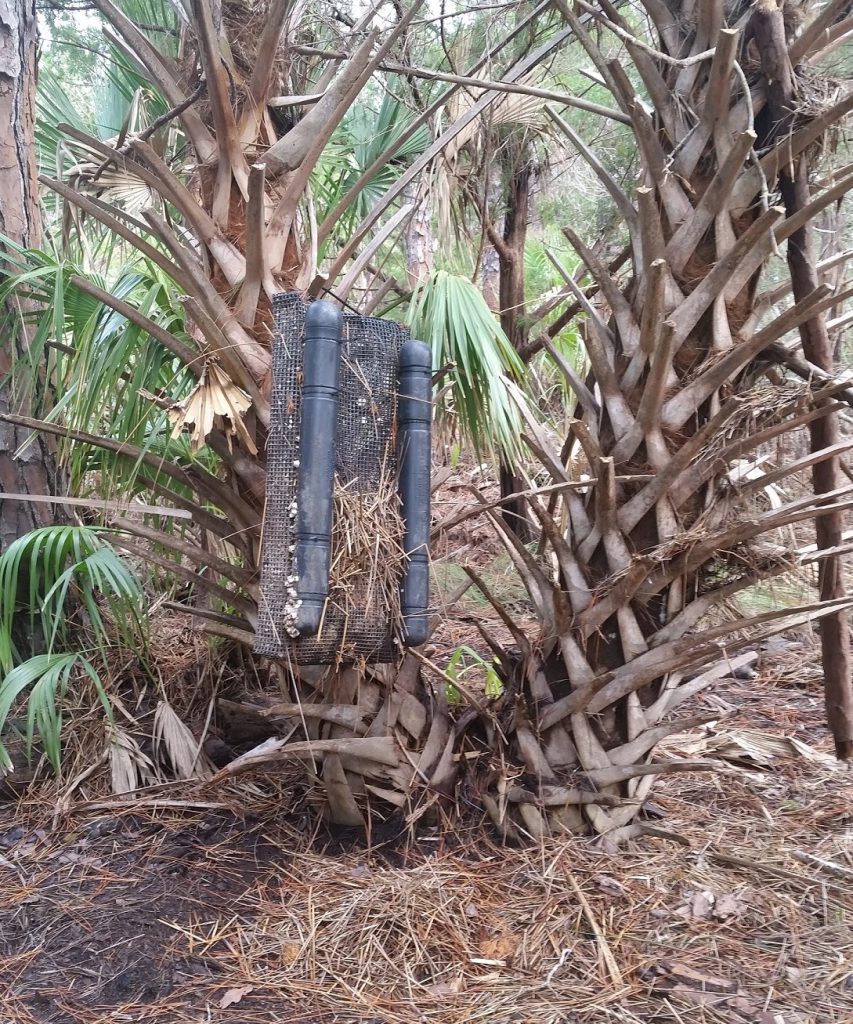
Oyster grow bag left hanging by Michael’s storm surge.
Erik Lovestrand, UF/IFAS Franklin County Extension
It may be a long time before the memories of Hurricane Michael begin to fade in the mind’s eye for residents of the Florida Panhandle. A record-breaking tropical cyclone in many respects, Michael caught a lot of people in the region off guard as it continued to gain strength on its rapid path through the Northern Gulf of Mexico. When many people went to bed the night before landfall, they had no idea what terrifying news would greet them upon hearing that a still-strengthening category 4 hurricane was about to rumble ashore.
It was not long after the wind slackened that folks began looking around and realizing the devastation left behind. Cotton crops in the path of the storm in North Florida and South Georgia suffered near 100% losses. Peanut crops were also severely impacted just at the time that harvest was beginning. The estimated damage to timber harvests alone were coming in around 1.3 billion dollars for Florida as virtually entire forests had been leveled. Even more damage was realized near the coastline where storm surge across the region ranged from 8 to 14 feet above normal water levels; smashing or flooding structures near the coast and carving new inlets across St. Joseph Peninsula near Cape San Blas.
Another industry that took a hard hit in much of the area was the seafood industry; everything from the producers to the dealers, processors, retail markets, restaurants, fueling and ice house facilities that service fishing vessels. Governor Scott requested a fisheries disaster declaration from the Federal Government and on November 1 the Secretary of the Department of Commerce granted the request. This determination provides an opportunity for Congress to appropriate fishery disaster assistance for the new fiscal year, which began in October. To further facilitate recovery efforts in Florida and beyond, the Department of Commerce can look to the Economic Development Administration, which spearheads the Federal government’s efforts to deliver economic assistance and support long-term growth after natural disasters.
Oyster growers in the region who had equipment and a crop of shellfish in the water took some losses as well. For those who were able to scramble to their leases before the storm and sink their floating baskets or cages to the bay bottoms, losses of gear were minimal as storm waves above the submerged gear had less impact. Gear that was unable to be submerged was more prone to break loose and drift away. However, even the growers that sunk gear experienced some significant oyster mortality due to sediments from churned up water smothering the shellfish in a layer of mud. Shellfish leases in Alligator Harbor were dealt another blow by an incredible field of debris that was washed off Alligator Point and blown through the lease area. Everything from boats to large sections of docks, structural walls, refrigerators and freezers was in the mix. These items were caught up in oyster long-lines and broke some while pulling up anchor poles on others, leaving quite a mess for growers to untangle.
Marinas, docks and vessels were also not immune to Hurricane Michael’s wrath in Gulf and Bay Counties. Government agencies estimate the number of damaged vessels in both Gulf and Bay counties to exceed 400. It will take some time for charter boat and commercial fishing operations to rebound. Scallop restoration projects in both St. Joseph Bay and St. Andrews Bay have suffered setbacks, as well. The hurricane has not only devastated coastal Gulf county economically and ecologically, but also geographically. There are two sizable inlets that have now been carved into the St. Joseph Peninsula. T.H. Stone State Park is closed until further notice.
Overall, the impacts from this storm will take a long time to recover from for many segments of our regional economy. Lessons learned by industries as well as individuals should improve our chances to reduce the loss of life and property in the future. The name of the game is “resiliency,” both in the spirit of the people who call this place home and in the way we learn to better adapt to what Mother Nature throws at us. Hang in there. Day by day.
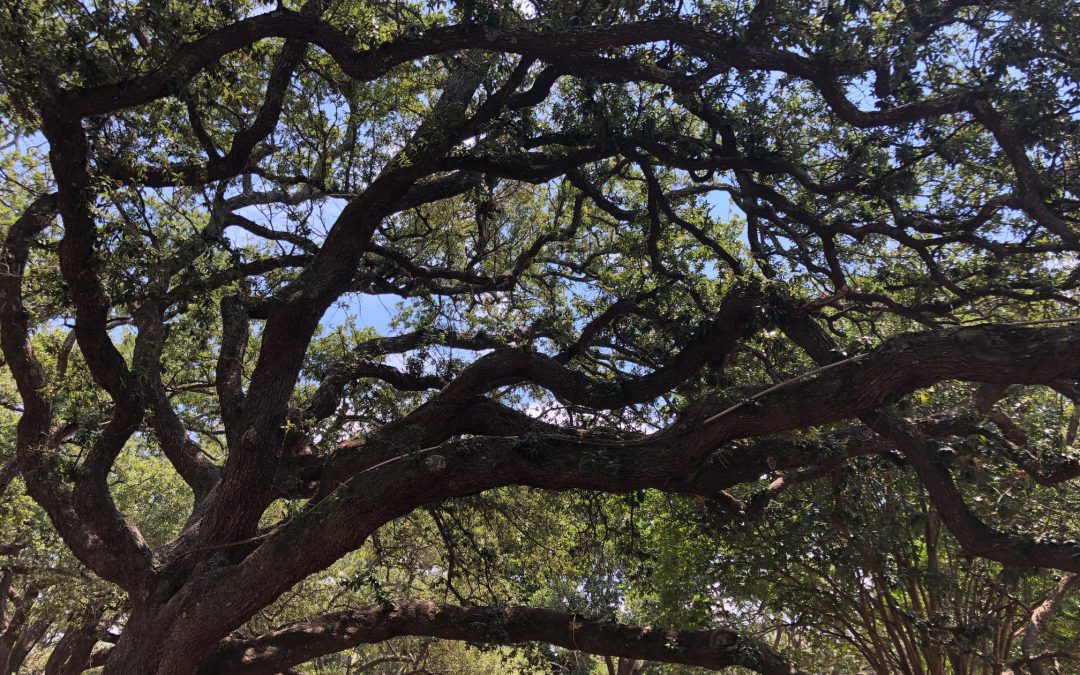
by Carrie Stevenson | Oct 26, 2018

Large trees can cause serious damage in a storm, but it is important to salvage as many as surviving trees as possible. Photo credit: Carrie Stevenson
It has been more than two weeks since devastating Hurricane Michael landed hard on the coast of Florida. Central-Panhandle counties from the Gulf to the Alabama line are in full recovery mode, struggling to return to normal after many days without power and clean water. A strong category 4 hurricane, Michael brought sustained winds of 155 mph, with gusts likely much higher—many instruments that measured wind speed failed and blew away with the onslaught of the storm.
Unfortunately, with winds this strong, trees of every shape and description blew down, bringing with them serious damage to homes, vehicles, and power lines. In the immediate aftermath of a storm, it is important to perform “tree triage” using the same method as emergency room personnel as they decide which patients to treat first, based on urgency.
Hazard trees causing or leading to unsafe conditions should be given priority. These would be limbs and trunks on top of houses, power lines, blocking roads, or leaning in precarious situations that could blow down on people or property. Once roads are cleared and dangerous trees and limbs are removed, homeowners can move their attention to downed trees that are lying out of harm’s way or leaning away from property.
It is important to remember that many injuries from hurricanes happen after a storm—often when physically and emotionally exhausted storm victims are using heavy machinery at elevated heights. Always be willing to ask for help, whether from volunteers, neighbors, or landscape professionals. Use proper safety precautions when utilizing chainsaws, ladders, tractors, and other machinery.
On a more positive note, many trees can be salvaged after a storm. In particular, younger, newly planted trees can often be righted or pruned and still grow to maturity. Don’t fall into the trap of clearing every tree from your property—healthy or not—out of fear. Trees are extraordinarily valuable, and particularly with all of the tree loss it is more important than ever to save as many trees as you can. These trees will provide much-needed shade, oxygen, air and stormwater filtration, and wildlife habitat. Learn the names of your trees that survived or had less damage, and plant more of those after recovery. Many long-lived species like magnolia, live oak, and cypress can weather storms better than other species.
It is important to continue monitoring any surviving trees for damage. Many trees, particularly pines, can be susceptible to disease, insect damage, and fungus after a storm and it may be several months before the damage is fully evident. After Hurricane Ivan, many pine forests and individual trees that survived the storm were lost to pine bark beetles within the following year.
For detailed information on tree assessment and making wise decisions, the IFAS Trees and Hurricanes publication has great photos and examples. Be sure to check it out and contact your local county Extension office if you have questions.
by Andrea Albertin | Jun 8, 2018
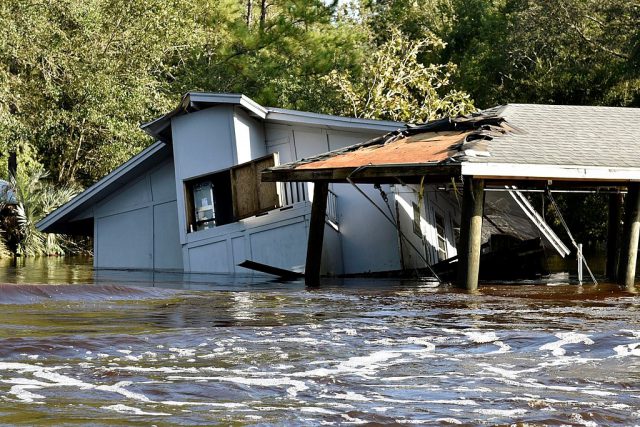
Flooding along the South Prong of the Black Creek River in Clay County on September 13, 2017. Photo credit: Tim Donovan, Florida Fish and Wildlife Conservation Commission (FWC).
As hurricane season is upon us again, I wanted to share the results of work that UF/IFAS Extension staff did with collaborators from Virginia Tech and Texas A&M University to help private well owners impacted by Hurricanes Irma and Harvey last year. This work highlights just how important it is to be prepared for this year’s hurricane season and to make sure that if flooding does occur, those that depend on private wells for household use take the proper precautions to ensure the safety of their drinking water.
About 2.5 million Floridians (approximately 12% of the population) rely on private wells for home consumption. While public water systems are regulated by the U.S. Environmental Protection Agency to ensure safe drinking water, private wells are not regulated. Private well users are responsible for ensuring the safety of their own water.
Hurricanes Irma and Harvey
In response to widespread damage and flooding caused by Hurricane Harvey in Texas and Irma in Florida in August and September 2017, Virginia Polytechnic Institute and State University (VT) received a Rapid Research Response Grant from the National Science Foundation to offer free well water testing to homeowners impacted by flooding.
They partnered with Texas A&M AgriLife Extension’s Well Owner Network (run by Diane Boellstorff and Drew Gholson) and us, at UF/IFAS Extension to provide this service. The effort at VT was led by members of Marc Edward’s lab in the Civil Engineering Department: Kelsey Pieper, Kristine Mapili, William Rhoads, and Greg House.
VT made 1,200 sampling kits available in Texas and 500 in Florida, and offered free analysis for total coliform bacteria and E. coli as well as other parameters, including nitrate, lead, arsenic, iron, chloride, sodium, manganese, copper, fluoride, sulfate, and hardness (calcium and magnesium). Homeowners were also asked to complete a needs assessment questionnaire regarding their well system characteristics, knowledge of proper maintenance and testing, perceptions of the safety of their water and how to best engage them in future outreach and education efforts.
Response in the aftermath of Irma
Although the sampling kits were available, a major challenge in the wake of Irma was getting the word out as counties were just beginning to assess damage and many areas were without power. We coordinated the sampling effort out of Quincy, Florida, where I am based, and spread the word to extension agents in the rest of the state primarily through a group texting app, by telephone and by word of mouth. Extension agents in 6 affected counties (Lee, Pasco, Sarasota, Marion, Clay and Putnam) responded with a need for sample kits, and they in turn advertised sampling to their residents through press releases.
Residents picked up sampling kits and returned water samples and surveys on specified days and the samples were shipped overnight and analyzed at VT, in Blacksburg, VA. Anyone from nearby counties was welcome to submit samples as well. This effort complemented free well water sampling offered by multiple county health departments throughout the state.
In all, 179 water samples from Florida were analyzed at VT and results of the bacterial analysis are shown in the table below. Of 154 valid samples, 58 (38%) tested positive for total coliform bacteria, and 3 (2%) tested positive for E. coli. Results of the inorganic parameters and the needs assessment questionnaire are still being analyzed.
Table 1. Bacterial analysis of private wells in Florida after Hurricane Irma.
| County |
Number of samples (n) |
Positive for total coliform (n) |
Positive total coliform (%) |
Positive for E. coli (n) |
Positive for E. coli (%) |
| Citrus |
1 |
0 |
0% |
0 |
0% |
| Clay |
13 |
5 |
38% |
0 |
0% |
| Hernando |
2 |
1 |
50% |
0 |
0% |
| Hillsborough |
1 |
1 |
100% |
0 |
0% |
| Marion |
19 |
5 |
26% |
1 |
5% |
| Monroe |
1 |
0 |
0% |
0 |
0% |
| Pasco |
40 |
19 |
48% |
1 |
3% |
| Putnam |
61 |
19 |
31% |
0 |
0% |
| Sarasota |
16 |
8 |
50% |
1 |
6% |
| Overall |
154 |
58 |
38% |
3 |
2% |
Of 630 samples analyzed in Texas over the course of 7 weeks post-Hurricane Harvey, 293 samples (47% of wells) tested positive for total coliform bacteria and 75 samples (2%) tested positive for E. coli.
What to do if pathogens are found
Following Florida Department of Health (FDOH) guidelines, we recommended well disinfection to residents whose samples tested positive for total coliform bacteria, or both total coliform and E. coli. This is generally done through shock chlorination by either hiring a well operator or by doing it yourself. The FDOH website provides information on potential contaminants, how to shock chlorinate a well and how to maintain your well to ensure the quality of your well water (http://www.floridahealth.gov/environmental-health/private-well-testing/index.html).
UF/IFAS extension agents that led the sampling efforts in their respective counties were: Roy Beckford – Lee County; Brad Burbaugh – Clay County; Whitney Elmore – Pasco County; Sharon Treen – Putnam and Flagler Counties; Abbey Tyrna – Sarasota County and Yilin Zhuang – Marion County.
We at IFAS Extension are working on using results from this sampling effort and the needs assessment questionnaire filled out by residents to develop the UF/IFAS Florida Well Owner Network. Our goal is to provide residents with educational materials and classes to address gaps in knowledge regarding well maintenance, the importance of testing and recommended treatments when pathogens and other contaminants are present.
Remember: Get your well water tested if flooding occurs
It’s important to remember that if any flooding occurs on your property that affects your well and/or septic system, you should have your well water tested in a certified laboratory for pathogens (total coliform bacteria and E. coli) and any other parameters your local health department may recommend.
Most county health departments accept samples for water testing. You can also submit samples to a certified commercial lab near you. Contact your county health department for information about what to have your water tested for and how to take and submit the sample.
Contact information for county health departments can be found online at: http://www.floridahealth.gov/programs-and-services/county-health-departments/find-a-county-health-department/index.html
You can search for laboratories near you certified by FDOH here: https://fldeploc.dep.state.fl.us/aams/loc_search.asp This includes county health department labs as well as commercial labs, university labs and others.
You should also have your well water tested at any time when:
- The color, taste or odor of your well water changes or if you suspect that someone became sick after drinking your well water
- A new well is drilled or if you have had maintenance done on your existing well
Testing well water once a year is good practice to ensure the safety of your household’s drinking water.












